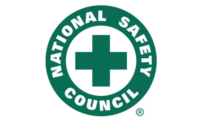Loren Sweatt, deputy assistant secretary of labor, offered these remarks regarding the fifth annual National Forklift Safety Day:
“As an alliance partner with OSHA for the last 14 years, the Industrial Truck Association and all of your hard work and commitment to preventing forklift incidents is greatly appreciated.
“Other alliance partners are here today, including the National Safety Council, the Material Handling Institute, and the National Wooden Pallet and Container Handling Association – all of whom continue to work to bring attention to the important issues surrounding forklift safety. Or, as it is referred to in OSHA-speak -- powered industrial trucks (PITS).
“In Fiscal Year 2017, the powered industrial truck standard was the seventh most frequently cited OSHA standard with 2,434 citations related to this standard.
“According to Bureau of Labor Statistics data, there were 72 forklift-related fatalities in 2016. And, another 7,000 workers were injured – that’s 19 forklift incidents every day! These numbers equate to real people, which is why we are here today demonstrating a commitment to worker safety.
“While all of you know and understand the importance of worker safety, especially when working around forklifts, it is important for everyone in this industry to ensure workers have the training and tools they need to recognize the hazards in these jobs.
“This week, OSHA will release a new QuickCard targeting safe forklift operation. The card is designed to remind workers of the key elements to prevent injuries, such as ensuring that operators are trained on the types of trucks used and workplace-related conditions, wearing a seatbelt, and never exceeding the rated load as well as ensuring the load is balanced.
“OSHA has other resources available to you and your workers to identify hazards associated with powered industrial trucks, including the Public Warehousing and Storage course offered through the OSHA Training Institute Centers.
“Only tangentially related, OSHA recently produced a one-page document entitled Safety Practices Once Tractor Trailer Drivers Arrive at a Destination.
“This is an example of how the agency is working to assist employers in understanding OSHA regulations. Through our existing alliance, products such as these should be developed collaboratively with an eye toward making this information readily accessible to you and your workers.
“These sound simple as we stand in this room today, but all of you know worker protection is more than one safety talk, more than one QuickCard, more than one training session. Vigilance that safety is incorporated into work practices every day are part of the task at hand. It only takes a moment for the worst to happen.”
Source: OSHA


